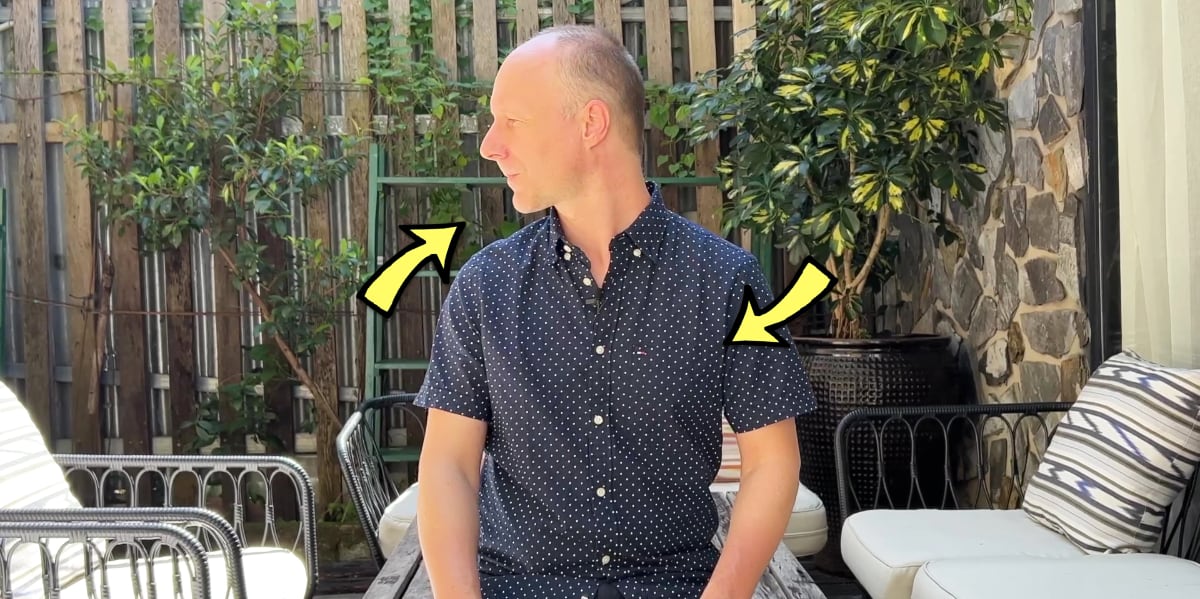Downstairs, starting at the corner of my street where I live in District 2 of Ho Chi Minh City, Vietnam, there’s hundreds and hundreds of little shops. Some of them shops are selling fresh fruit. The one where I buy my bananas is one of the best selling shops in the area. Business is good. They sell various types of coconuts and coconut jelly desserts. They sell various types of bananas, mangoes, mangosteens, avocados, dragonfruits, longans, all kinds of fruit.
The shop is a shop and a home, with the storefront in the front, a courtyard in the middle, and a home in the back. All members of the family work there: the father, the mother, the grandparents, and two kids of about 5 and 9 years old. There’s chickens walking about in the courtyard and in between the crates in the shop, there’s a dog and two cats.
The kids are part of the family and learn the business. They see how the grown-ups run the business, buy and sell, handle problems, tend to customers. The kids are free to roam around and study, but also do chores like cleaning, preparing fruit for selling, they talk to customers and handle money. They grow into the successful family business and are part of the family and greater community of sellers and business owners. They are close to their parents and grandparents, and absorb their values, skills, teachings, everything that is important for a good life.
Now imagine: the police shows up and takes the kids away. For 12 years, for five to six days a week, for 5 to 8 hours at a time, they are put into a building that is removed from public life. Every hour they are moved from one cell to another cell that is bland and has no connection to real life or family business. They are put into these cells with other kids of similar age and social background, which are equally removed from their lives and families.
This means the kids can learn hardly anything from each other as they are all just kids without context, and they all have nothing of real importance to do, to see, to learn. This is inherently stressful for all of them, since it’s the nature of children to learn and to get prepared for life as grown-ups, to grow into their position in a community and to learn to participate in society as a whole in meaningful ways, to find meaning through what they do. They feel an internal, invisible clock ticking while they are forced to sit idly and are kept away from their real lives. Every tick of that internal clock is like a beating, and the stress just keeps building up.
They need to sit still on little chairs behind little desks and comply with a whole range of rules that don’t seem to make sense. They are required to obey to an authority that is foreign to their family, to their community, and to their actual lives. In fact, in most cases they won’t even know the people that are giving them the rules, these people are neither close friends of their parents, nor part of their families, nor their communities. Worse so, with time children will become used to following random strangers (and might even look for strangers to follow) and to accept mandates from whomever mounts themselves in front of them.
On top of that they are given “home work” by the strangers they need to obey. “Home work” that for the most part neither has relevance for their own lives nor for their families, and which will eat away even more time and sense.
On top of that their skills to write, to read, to calculate and to communicate is kept at an inadequate, poor level, in most cases much worse than what they would learn at home for the community they were born into. I quote from the book Dumbing Us Down by John Taylor Gatto: “It appears to me as a schoolteacher that schools are already a major cause of weak families and weak communities. They separate parents and children from vital interaction with each other and from true curiosity about each other’s lives. Schools stifle family originality by appropriating the critical time needed for any sound idea of family to develop—then they blame the family for its failure to be a family. It’s like a malicious person lifting a photograph from the developing chemicals too early, and then pronouncing the photographer incompetent. A Massachusetts Senator said a while ago that his state had a higher literacy rate before it adopted compulsory schooling than after. It’s certainly an idea worth considering: schools reached their maximum efficiency long ago, meaning that more for schools will make things worse, instead of better. [..] Senator Ted Kennedy’s office released a paper not too long ago claiming that prior to compulsory education the state literacy rate was ninety-eight percent and that after it the figure never exceeded ninety-one percent, where it stands in 1990.”
Not even mockery, but sad reality, the children’s family has to pay money for all that schooling either directly, or indirectly via government tax. And after these 12 years, when the kids are finally free to go, their family’s business might not exist anymore, or for whatever reason they don’t want or can’t enter their family’s business anymore, and they need to start a profession (or job) from zero, maybe in a dog-eat-dog environment.
This whole thing is as mad as it sounds like, yet many parents are still under the spell to think that the benefits of compulsory schooling outweigh the problems, and that the problems can somehow be fixed. However, as things look like after 200 years of compulsory schooling, the schooling system can’t be fixed… just like black mold on a wall can’t be fixed. The solution is to have less of it, not more.



